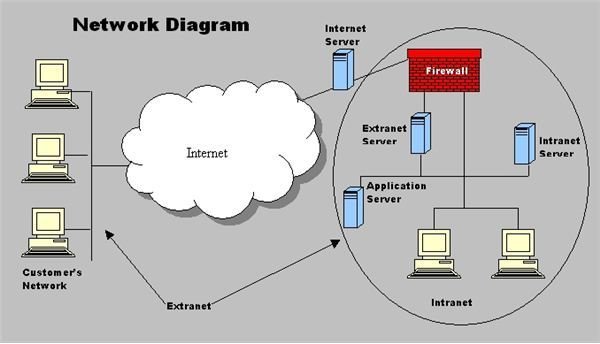What's the Difference Between the Internet, Intranet, and Extranet?
Network Categories
As far as business network infrastructure is concerned, there are three broad categories of networks, namely the Internet, intranet, and extranet. These networks use various network protocols (i.e. TCP/IP) and topologies to allow for communication between computers and other network devices such as printers and VOIP systems. In this article we will take a look at the differences between: intranets and the Internet, intranets and extranets, and the Internet and extranets.
Depending on the needs of an organization, a network may span a geographical divide or allow for interconnection between persons and devices within the same building. In this day and age, this interconnectivity is a matter of great importance because it facilitates the efficient running of an organization or helps it to maintain a competitive edge.
Internet
The Internet is a global system of interconnected computer networks. It is not controlled by a central entity and therefore relies on network devices and accepted conventions and protocols to relay the data traffic until it gets to its destinations. Some countries have imposed rules to censor or otherwise control what kind of content is accessible by its citizen (i.e. China). However, except for the management of Internet Protocol addresses and the Domain Name System by ICANN (the Internet Corporation for Assigned Names and Numbers), the Internet remains unregulated and uncensored.
The beginnings of the Internet can be traced back to the 1960s when the United States funded research by its military agencies to develop a fault-tolerant and robust distributed network of computers. The Internet is now global and in theory can be accessed by anyone who can get access from an Internet service provider.
Intranet
On the other hand, an intranet is a private network that is setup and controlled by an organization to encourage interaction among its members, to improve efficiency and to share information, among other things. Information and resources that are shared on an
intranet might include: organizational policies and procedures, announcements, information about new products, and confidential data of strategic value.
An intranet is a restricted-access network that works much like the Internet, but is isolated from it. As is the case with the Internet, an intranet is based on TCP/IP protocols. Therefore, a web page in an intranet may look and act just like any other webpage on the Internet, but access is restricted to authorized persons and devices. In some cases, access to an intranet is restricted by not connecting it to other networks, but in other cases a firewall is used to deny access to unauthorized entities.
The difference between an intranet and the Internet is defined in terms of accessibility, size and control. Unless content filters are being used or the government is censoring content, all the Internet’s content is accessible to everyone. On the other hand an intranet is owned and controlled by a single organization that decides which members are allowed access to certain parts of the intranet. In general, an intranet is usually very small and is restricted to the premises of a single organization.
Extranet
An extranet is an extended intranet. In addition to allowing access to members of an organization, an extranet uses firewalls, access profiles, and privacy protocols to allow access to users from outside the organization. In essence, an extranet is a private network that uses Internet protocols and public networks to securely share resources with customers, suppliers, vendors, partners, or other businesses.
Both intranets and extranets are owned, operated and controlled by one organization. However, the difference between intranets and extranets is defined in terms of who has access to the private network and the geographical reach of that network. Intranets allow only members of the organization to access the network, while an extranet allows persons from outside the organization (i.e. business partners and customers) to access the network. Usually, network access is managed through the administration of usernames and passwords, which are also used to determine which parts of the extranet a particular user can access.
Summary
The Internet, extranets, and intranets all rely on the same TCP/IP technologies. However, they are different in terms of the levels of
access they allow to various users inside and outside the organization and the size of the network. An intranet allows for restricted access to only members of an organization; an extranet expands that access by allowing non-members such as suppliers and customers to use company resources. The difference between the Internet and extranets is that while the extranet allows limited access to non-members of an organization, the Internet generally allows everyone to access all network resources.
Image credit:
“Difference between internet, intranet and extranet.” Author
